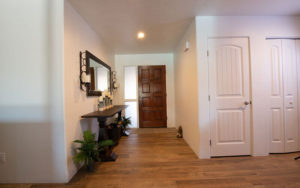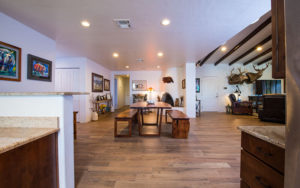What Is Universal Design?
 Universal design is for everyone. Also called accessible design, this is an approach to building or remodeling a home that caters to people of all ages, sizes, and abilities. The idea is to fill the environment with products, fixtures, and details that make it usable for all, including those with limited mobility, balance issues, cognitive impairment, and sensory disabilities.
Universal design is for everyone. Also called accessible design, this is an approach to building or remodeling a home that caters to people of all ages, sizes, and abilities. The idea is to fill the environment with products, fixtures, and details that make it usable for all, including those with limited mobility, balance issues, cognitive impairment, and sensory disabilities.
Designing for all — or at least as many people as possible rather than the “average” user — has gained awareness in recent years. Still, contemporary home design has yet to reflect this new trend on a large scale. Instead, it continues to cater to the traditional four-person nuclear family, which hasn’t been the leading demographic in America for decades.
What Are the Living Arrangements of American Households?
 According to the U.S. Census Bureau’s annual America’s Families and Living Arrangements, the demographics of the average U.S. household have changed drastically in the 60 years since family statistics began being collected. For instance, single adults living alone comprise 28% of all households compared to just 13% in 1960. There are also far more instances of couples without children, adults living with roommates, single-parent families, and multigenerational households.
According to the U.S. Census Bureau’s annual America’s Families and Living Arrangements, the demographics of the average U.S. household have changed drastically in the 60 years since family statistics began being collected. For instance, single adults living alone comprise 28% of all households compared to just 13% in 1960. There are also far more instances of couples without children, adults living with roommates, single-parent families, and multigenerational households.
Universal Design Elements
A home designed with accessibility in mind needn’t look institutional. The goal is to achieve flexibility so everyone’s needs are met, both now and in the future. After all, anyone’s abilities may change, whether due to a sudden life-altering accident, temporary illness, or gradual aging.
Here are some features you might find in a universally designed home:
- Wider doorways measuring 36 inches instead of the standard 28 inches
- Tiered or height-adjustable cabinets and countertops designed to accommodate seated and standing people
- Spacious bathrooms and closets
- Grab bars and railings
- Non-slip surfaces
- Curbless showers and walk-in tubs
- Comfort-height toilets
- Multifunctional furniture
- Ramps or single-story construction
- Automated smart features
- Customizable home elements that can adapt from one user to the next
Benefits of Universal Design
With traditional buildings still the most common option, why should you consider accessible design? Consider these benefits:
- Live independently: If you have been in an accident, put on bed rest, or noticed your needs are changing with age, universal design allows you to continue living comfortably and safely in your home for years to come.
- Cater to aging or disabled friends and family: You want everyone you love to feel comfortable visiting your home. If you have a friend in a wheelchair or an elderly loved one who stays with you sometimes, designing your home to meet their needs makes them feel more welcome.
- Plan for the future: Perhaps you don’t currently have any disabilities. However, you can’t expect to operate at full capacity during every activity for your entire life. That’s why it’s wise to incorporate universal design elements into your next home renovation.
Remodel Your Arizona Home with Universal Design Elements
Universal design requires an awareness and appreciation for the varying abilities of different people. At Aaron & Co., we can help make your home more user-friendly for all with our accessibility remodeling services. Let us transform your kitchen, bathroom, bedroom, or any other space to cater to your or your family’s changing abilities without needing to leave your home.
When you’re ready to begin your universal design home renovation, call (520) 999-4138 or contact us online for a free consultation.
